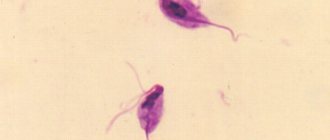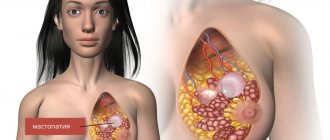The term “thrush” refers to a fungal disease of an infectious nature. Another name for it is candidiasis. The pathology is most often diagnosed in women. The fungus can normally be present in a healthy person. The active process of its reproduction is triggered under the influence of certain provoking factors. In many cases, a person does not even suspect that he is infected and poses a danger to others. The causes, symptoms, incubation period of thrush in women and men, and treatment regimens for the disease are described below.
Development mechanism
Normally, the vaginal pH is acidic. Due to this, pathogens that enter the body die. In other words, pH is a kind of barrier that prevents the proliferation of fungi and the spread of other infections. Under the influence of various unfavorable factors, the degree of protection weakens, that is, the natural environment is disrupted.
The causative agent of thrush is a pathogen of the genus Candida. Once in the body, it affects the mucous membranes. The fungus feeds on glucose. Its active vital activity helps to reduce the number of beneficial bacteria. Incubation of thrush is a short period. If left untreated, the pathogen spreads very quickly to other internal organs.
What shortens the incubation period for thrush?
What shortens the period of development of the disease?
Immune system status:
- stress;
- hypothermia;
- herpes;
- use of cytostatics;
- glucocorticoid hormones;
- radiation therapy;
- antibiotics and antiseptics;
- taking oral contraceptive pills. Not only reduces immunity, but also changes the species composition of the vaginal microflora;
- vitamin deficiency;
- HIV infection.
Endocrine diseases:
- diabetes;
- obesity;
- hypothyroidism is a decrease in thyroid function;
- the state of the local microflora: if an imbalance occurs, then conditions are created for the proliferation of candida;
- pregnancy. A decrease in immunity creates conditions for the growth and development in a woman’s body of a fetus that is half foreign to her. But at the same time, Candida also multiplies. Every 3 pregnant women suffer from thrush;
- smoking and alcohol.
Causes
In most cases, the process of development of candidiasis starts when both local and general immunity is weakened after infections or chronic diseases.
In addition, thrush appears under the influence of the following factors:
- Hormonal imbalance.
- Taking combined oral contraceptives.
- Dysbacteriosis.
- Long-term use of corticosteroids, cytostatics and antibiotics.
- Change of climatic conditions.
- Use of products intended for intimate hygiene. As a rule, they contain a large amount of flavorings and alkali.
- Regular use of panty liners.
- Wearing uncomfortable and tight underwear, as well as products made from synthetic materials.
- Use deodorized pads and tampons.
- Unbalanced diet. The growth of the fungus is promoted by the consumption of confectionery products, spicy and fatty foods, carbonated drinks, and various sauces.
- Avitaminosis.
- Excess body weight.
- Violation of metabolic processes.
- Smoking.
- Prolonged stay in a state of stress.
Under the influence of one or more of the above factors, the number of beneficial bacteria that secrete lactic acid decreases. As a result, the pH of the vagina shifts to the alkaline side, which is a favorable factor for the growth of fungus.
Reasons for appearance
Thrush often develops due to stress. Sometimes the cause of the disease is a cold or the presence of a virus. The fungus can begin to grow due to certain chronic diseases. The disease often appears in diabetics, people suffering from diseases of the liver, lungs, and gall bladder. The causes of the disease are:
- presence of hormonal imbalances;
- obesity;
- frequent change of sexual partners;
- smoking;
- alcohol consumption;
- oncology treatment;
- decreased protective functions of the body;
- use of synthetic underwear;
- poor nutrition;
- hypothermia.
Also, as mentioned above, candidiasis can occur due to non-compliance with personal hygiene rules.
The listed factors are the main ones. Knowing them, you will be able to stop the development of the disease in time. It is especially recommended for men to listen to their bodies. They are often carriers of infection. Thrush in men develops relatively slowly and it is not always possible to detect it. For this reason, men may put off visiting a doctor even if their partner is diagnosed with candidiasis. In this case, the course of treatment is recommended not only for women, but also for men.
Thrush incubation period and severity
During candidiasis, there are several stages. If the doctor correctly identifies it, he will be able to prescribe the most effective treatment.
Stages of development of candidiasis:
- Primary. In other words, this is the incubation period for thrush. Characterized by the penetration of fungus into the human body. The duration of the incubation period for thrush in women is on average 1 day. In some cases it drags on for up to 7-8 days. At this stage, symptoms are absent or so mild that they do not cause anxiety. In men, the incubation period for thrush is also only a few days.
- Secondary. In other words, this is the budding period. After the end of the incubation period of thrush, the fungus actively begins to multiply. Pathogens gradually penetrate into tissues, and if left untreated, they gradually affect internal organs. At this stage, a person exhibits the first severe symptoms.
- Tertiary. The fungus penetrates soft tissue to a depth of approximately 6 mm. At this stage, the clinical manifestations are very pronounced. This stage is considered an already advanced form of the disease, requiring long-term drug treatment.
- Final. Pathogenic microflora penetrates the bloodstream and spreads throughout the body through liquid connective tissue. In such situations there is a risk of death. In this regard, it is recommended to consult a doctor immediately after the first alarming symptoms occur.
Thus, the development of the disease occurs very quickly. In this regard, the infection is similar to an equally common pathology called ureaplasma. The incubation period of thrush can be only a day, a maximum of several days, after which the yeast-like flora begins to actively multiply.
How to determine the presence of a disease?
In adults and children, thrush often affects:
- genitals;
- oral cavity;
- skin covering.
Often, candidiasis develops in a child immediately after birth.
This is explained by the fact that the pregnant woman was a carrier of the infection. Remember that if you do not follow hygiene rules, this will contribute to the development of candidiasis. This fact applies to both children and adults. If you are interested in how long it takes for thrush to appear, then keep in mind that the disease develops differently in men and women. Candidiasis can be detected externally 2–4 days after infection. Sometimes the incubation period for thrush in men lasts for a whole month.
How many days does it take for thrush to appear after infection in women? In this case, the incubation period of candidiasis lasts 1–5 days. Symptoms may also appear after 15–20 days. In children, candidiasis appears 1–8 days after infection.
If the infection has spread, the person may experience some discomfort while urinating. After infection, discomfort sometimes occurs during sexual intercourse. Often people attribute the detected symptoms to a common cold. This can lead to an exacerbation of the disease, which will be very difficult to cure.
Clinical picture
It often happens that unpleasant symptoms disappear on their own. This situation does not exclude the need to consult a doctor. This is due to the fact that the disease has become chronic or asymptomatic, but there has been no recovery.
In most cases, after the end of the incubation period of thrush, women experience the following symptoms:
- Painful sensations during sexual intercourse.
- Swelling of the vaginal walls.
- White plaque on the genitals.
- Copious discharge with a cheesy consistency.
- Severe itching and burning.
- Rash on the genitals.
- Deterioration in general health.
- Frequent urination.
- Aching pain in the lower abdomen.
- Pain during urination.
After the incubation period for thrush in men is completed (the fungus is usually transmitted from a partner), there may be no symptoms. In representatives of the stronger sex, the disease most often occurs in a latent form. Only minor disturbances in sexual function may be observed. If left untreated, the fungus spreads to the urinary canal and provokes the development of urethritis.
Manifestation of thrush in women and men
Thrush has similar symptoms in men and women. At first, the clinical picture of the disease is not clearly expressed. Symptoms increase gradually and are especially noticeable in severe forms of the lesion.
How does thrush manifest after infection depending on gender:
- Female discharge due to thrush
Among women. The first manifestations of the disease appear on the mucous membranes of the body or on the skin where there is a moist environment. Thrush is accompanied by the following symptoms: staining of the mucous membrane of the external and internal genital organs in a bright red color, the presence of an unpleasant sour odor, swelling in the affected area. A few days later, discharge with a cheesy consistency appears from the vaginal area. If the leucorrhoea acquires a green or pink tint, then we are talking about the addition of a secondary infectious process.
- In men. Representatives of the stronger sex are much less likely to encounter candidiasis. The disease is accompanied by the appearance of slight redness on the mucous membrane of the penis, which is accompanied by characteristic itching and burning. An unpleasant odor appears, reminiscent of spoiled fermented milk products. When performing sexual intercourse, pain occurs. A discharge forms on the head of the penis, the consistency of which resembles cottage cheese. The foreskin becomes swollen and a white coating and a thick rash appear on it. Mucus that resembles pulling threads may be released from the urethra. When urinating, a man feels severe discomfort.
Features of the disease in children
Infection of a child occurs during gestation, when the baby passes through the birth canal, or due to insufficient hygiene rules. In children, the incubation period for thrush is on average one day. The very next day after infection, pronounced clinical manifestations appear. This rate of development of pathology is due to the fact that the body of a small child is not yet able to stop the proliferation of yeast-like flora.
Candidiasis affects the skin and mucous membranes. Most often, doctors find thrush in children in the oral cavity.
Routes of infection
To understand where thrush comes from, you need to understand the features of its nature and the route of entry:
- a weakened immune system due to taking antibiotics and other drugs taken to treat the genitourinary system;
- hormonal changes due to pregnancy or menstrual cycle;
- eating foods high in glucose. In such an environment, candidiasis develops quickly and rapidly;
- infection from a sexual partner, and the partner himself can only be a carrier of the disease;
- For the normal functioning of the microflora of all mucous membranes and skin, yeast-like microorganisms of the Candida family are necessary.
Diagnostics
When the first alarming signs occur, women should contact a gynecologist. The doctor will order an examination and, based on its results, draw up a treatment plan.
Basic diagnostic methods:
- Flora smear. During the study, pathogens are detected, and the number of lactobacilli is assessed.
- Bacterial sowing With its help, you can accurately determine the type of fungus and determine its sensitivity to drugs.
- Colposcopy. This term refers to examining the vagina with a special instrument.
Additionally, the doctor may prescribe an analysis of the biomaterial for sexually transmitted infections.
Prevention of thrush
Only a specialist can determine effective therapy, and you should definitely contact it. Only he will be able to fairly accurately determine the stage of the incubation period of the disease and prescribe the necessary medications. It is worth understanding that the earlier candidiasis is detected, the less time treatment will take.
The protracted form can also be completely eliminated, but this will require significantly more time and money, since the course will not consist of several medicinal pills, but of a complete set, including tablets, ointments, etc. Therefore, for the sake of prevention, you should not neglect going to the gynecologist, as this can prevent very unpleasant consequences.
In order to reduce the risk of developing the disease, you should adhere to proper nutrition, eliminate bad habits, give the body proper rest, observe the rules of personal hygiene, engage in protected sex, and do not get carried away with diets and hormonal means for weight loss.
Treatment
After receiving the diagnostic results, the doctor draws up a treatment regimen. It includes the following items:
- Use of vaginal tablets and suppositories. The most effective drugs are the following: “Pimafucin”, “Candibene”, “Gino-travogen”, “Ginezol”, “Terzhinan”, “Poliginax”. The duration of the course of treatment is determined by the doctor. Typically, this period takes from 3 to 10 days. Vaginal tablets and suppositories must be inserted into the vagina, preferably before bed, after putting a sanitary pad on your underwear. It is important to know that mild itching may continue for 2 weeks after completion of treatment.
- Taking antifungal drugs. Medicines intended for oral use have a complex effect, that is, they destroy fungi in all organs. The most commonly prescribed medications are: Fluconazole, Mikosist, Diflucan, Ketoconazole, Pimafucin, Nystatin.
It is important to remember that the course of treatment must be completed by both partners. This is due to the fact that re-infection can occur during sexual intercourse. This rule applies even if partners regularly use a condom. Men are also prescribed pills. The names of the drugs are usually the same as those that gynecologists recommend for women. Additionally, it is necessary to treat the head of the penis with ointments. Most often, doctors recommend Pimafucin and Clotrimazole.
When should you sound the alarm?
Contact your doctor promptly to prescribe treatment.
In order to prevent thrush from developing, it is recommended to consult a specialist when the disease first begins to manifest itself. It often happens that signs of candidiasis seem to appear, and then disappear on their own. In this case we are talking about a chronic form or an asymptomatic course. This can also happen with improper treatment. This is indisputable evidence that this disease does not have a single incubation period.
How to recognize infection in this case? It is enough to know a few features of the disease. In women, for example, an exacerbation occurs before menstruation. At the same time, the itching intensifies, and profuse whitish discharge from the vagina appears. In this case, pain occurs in the abdominal area in the area of the ovaries.
An allergic process can also intensify the manifestations of thrush. As a rule, young children are more prone to this symptom than others. After eating chocolates, symptoms of candidiasis appear in the oral cavity, which until then had not made itself felt.
It often happens that adults develop a relapse after completing a course of drug therapy. What does this mean? The point is that the sexual partner is also infected. His symptoms may be completely absent or minor. In this case, you need to undergo treatment at the same time. This is the only way to completely cure the disease in sexual partners.
The incubation period for thrush varies and can range from several days to several weeks. What to do if primary symptoms of the disease appear? Under no circumstances should you self-medicate. First of all, you need to consult a specialist. Otherwise, signs of candidiasis will appear again and again, since it is impossible to completely cure candidiasis on your own. If symptoms of thrush appear, then you need to find out the cause of the disease and eliminate it. As a rule, after this the body recovers on its own. Otherwise, symptomatic therapy is carried out.
Forecast
The outcome of the disease directly depends on the timeliness of visiting a doctor. At the primary stage, the use of local drugs is sufficient. Their active substances quickly destroy yeast-like flora.
For moderate disease, the use of local medications and tablets is indicated. The recovery process takes on average 10 days.
Ignoring the problem leads to the spread of infection to internal organs. If the patient consults a doctor at this stage, she will face long-term treatment. Lack of treatment can even lead to death.
Features of treatment of fungal infection
- For successful treatment of male or female candidiasis, it is important to follow the doctor’s instructions and not self-medicate.
- It is necessary to resort to the help of both systemic and local drugs.
- It is important to carry out therapy at the same time for both partners so that they do not begin to infect each other again.
- It is necessary to strengthen the immune system by hardening, leading a healthy lifestyle, consuming vitamins, and eating the right foods.
- Stressful situations should , because negative emotions affect our immunity and reduce it.
- You need to get enough sleep , because good sleep is the key to strong immunity.
- It is necessary to maintain genital hygiene . In this case, you need to be careful about caring products. For example, you should not use regular soap or gel; these products cause dry mucous membranes. You should give preference to special creams or gels for caring for the genital area.
- It is necessary to exclude self-diagnosis and self-medication .
- should be given to cotton or linen underwear . Synthetic fabric creates a greenhouse effect, and mushrooms thrive in such an environment.
- It is necessary to limit or eliminate ill-conceived douching (applies to women), since such procedures wash out the natural microflora from the vagina and open access for fungal infections.
Prevention
In order to prevent the development of candidiasis, it is recommended to avoid unprotected sexual intercourse, be responsible for maintaining good hygiene, and strengthen the immune system in a timely manner. In addition, it is advisable to avoid wearing underwear made of synthetic materials. It is also necessary to make adjustments to the diet. It is necessary to reduce the amount of carbohydrate foods and confectionery products in the menu.
Methods for treating thrush
Treatment of thrush can be carried out with various pharmacological agents of systemic and targeted action. The newest drugs are used not only for treatment, but also as prevention. They normalize the level of Candida fungi in the microflora of the genital organs, and protect the body from possible relapses of the disease.
The standard course of treatment includes antifungal drugs and medications to restore the body's immune system. To improve treatment results, it is recommended to follow a proper diet and lead a healthy lifestyle. When taking antibiotics that can undermine the bacterial imbalance, it is necessary to control their amount.
Stages of thrush formation
Conventionally, based on the stages of the disease, the process of its evolution can be divided into four stages. Each of them is characterized by its own pathophysiological signs and symptoms:
- Infection of the surface of the skin and mucous membranes;
- Reproduction of the pathogen;
- Infiltration of a pathogenic fungus deep into the epithelium;
- Generalization of the pathological process.
At the first stage, the infectious strain simply enters the surface epithelium of the subject. The reason for this is always direct contact with an object already affected by the disease. Most often, thrush is a consequence of sexual intercourse, less often it is kissing or touching the infected child's mother's breast.
Conditions for fixation on the skin and further proliferation of a pathogenic fungus can be a favorable acid-base environment, weakened immunity, functional and organic changes in hormonal levels in tissues and organs, as well as the absence of Candida antagonists in the local microflora as a result of the use of antibiotics.
The second stage of the incubation period occurs only when the body’s own capabilities to resist are insufficient or exhausted. The fungus, which has established itself on the epithelium and uses its nutritional resources, begins to actively multiply and invades new areas of the skin and mucous membranes.
After three to five days, the first symptoms of thrush appear:
- Pain during sexual intercourse;
- Whitish mucus discharge from the vagina;
- Difficulty urinating in men;
- Redness and swelling of the head of the penis.
It is better not to bring the matter to the third stage. You need to immediately consult a doctor and begin treatment. Otherwise, the candidal fungus will penetrate deep into the epithelium and will devour surrounding tissues, including the muscles of the vagina in women, the walls of blood and lymph vessels, and nerve fibers.
By the second week of the disease, its symptoms worsen:
- Discharge from the genital organs in men and women becomes purulent and acquires a disgusting odor;
- The process of urination also becomes difficult in women;
- In men, the fungus spreads to the foreskin, increasing inflammation of the penis.
It is already extremely difficult to reverse this destructive process, even with enhanced therapy.
At the fourth stage, which may occur in a month or two, the thinned walls of the blood vessels are destroyed. Fungal strains enter the blood and lymph - the pathological process is generalized. To local lesions of the genitourinary system, through the blood and lymph flows, diseases of the prostate gland in men, uterus in women, ureters, bladder, kidneys, and intestines are added.
The infection spreads throughout the systemic and pulmonary circulation, affecting all internal organs - their tissue and neurovascular structure. When the liver, lungs, heart and brain are affected, the disease becomes universal. Normal metabolism becomes impossible. There is only one final outcome - death.
What happens when a fungus enters the body?
There are several stages of development of thrush.
Adaptation . During this period, the fungus that has entered the body: on the skin, in the oral cavity, in the intestines, in the vagina adapts to new conditions of existence.
Some of the candida die. The survivors attach to the epithelium, a process called adhesion.
In order for candida to attach to the epithelium, it is necessary to create certain conditions: weakening of the local microflora, certain acidity, humidity and temperature, nutrients.
If the fungus has adapted to the new environment and attached to the epithelium, then it begins to multiply intensively and colonize the mucous membrane or skin . This will happen if candida copes with the body’s defenses. Otherwise, it will remain in the surface layer of the epithelium. And the person will become an asymptomatic carrier of the infection. In this case, carriers can be a source of infection for others.
But this in a healthy body is prevented by:
- normal microflora of the vagina, skin, oral cavity, etc. It competes with candida for nutrition, releases substances toxic to the fungus, and also regulates acidity, in which the fungus cannot reproduce;
- cells of the immune system: macrophages and lymphocytes. They directly destroy the fungus;
- secretory immunoglobulin A. It is always present in the mucous membranes and protects against infection.
If the immune system fails, then the next stage begins - dissemination (spread). This means that the fungus penetrates the blood vessels and spreads throughout the body through the bloodstream. The infection generalizes. Internal organs are affected: heart, liver, kidneys, pancreas, lungs, etc.
Visceral candidiasis develops . As a rule, stage 4 is observed in weakened patients, with cancer, against the background of aggressive treatment of cancer patients with cytostatics, radiation therapy, and with HIV infection.
What worries men?
In men, signs of thrush indicate a decrease in immunity or the presence of diseases that contribute to the development of thrush. The incubation period for thrush in men lasts 2-5 days. With candidal balanoposthitis, the glans penis and foreskin are affected.
Men are bothered by itching and burning. The head of the penis is swollen. A white coating appears. The skin on it, as well as on the scrotum and perineum, turns red. Discomfort occurs during urination and during sexual intercourse.
When the first signs of thrush appear, you should consult a doctor. The insidiousness of this seemingly harmless disease is that it may hide other infections or diseases that require treatment. For example, thrush and bacterial vaginosis.
In this case, the symptoms of the diseases are similar; additional examination is necessary for diagnosis. Only a doctor can do this. Candidiasis is often combined with diabetes mellitus. Relapses will occur until the patient regulates blood sugar levels.
The incubation period is important for making a diagnosis, because... it makes it possible to establish the cause of the disease, and therefore select the optimal treatment.
For example, if symptoms of thrush appear a few days after taking antibiotics, then correction of the intestinal microflora may be necessary. But if after sexual intercourse, then it is necessary to examine the partner and prescribe treatment for both.
Graduated from Grodno State Medical University, I work at the 2nd level Interdistrict Perinatal Center, Volkovysk, Belarus. I specialize in emergency gynecology











